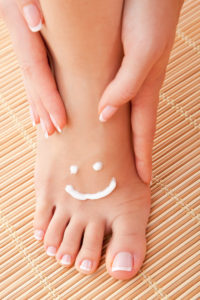
For many people suffering from plantar fasciitis, the first step towards recovery is literally the hardest, because of the chronic heel pain caused by the thickening and inflammation of the plantar fascia. This is a length of tissue running underneath the sole of the foot. The rehabilitation process can take anywhere from 6 to 18 months once a GP or podiatrist (foot specialist) has made the diagnosis. There are a range of treatments available, which are predominately non-invasive and can be implemented with minimal disruption to daily life.
Exercises for Plantar Fasciitis
Calf stretching is one of the easiest ways to combat the effects of plantar fasciitis and the tightness in the Achilles tendon found in almost 80% of cases. It is simple to do; a calf stretch can be performed by standing with one leg forward, one leg back, facing towards a wall, with both hands stretched out. It’s typically held for 30 seconds. The amount of calf stretching will depend on the severity of the plantar fasciitis. Normally a daily routine of calf stretching twice a day with five 30 second intervals will be enough to produce effective results.
There are a couple of stretches that can be performed while still in bed, which could help to reduce the pain of taking the first step of the day. Simply flexing your foot up and down 10 times before standing up can relax the plantar fascia, and increase mobility. For a more hands-on approach, toe stretches can be a great way to start the day; sitting on the edge of your bed, heels flat on the floor, reach down with your hand and pull the big toe up and back. Pull towards your ankle and away from the floor, and hold the stretch for 15 to 30 seconds. Repeat 2 to 4 times in the morning. It’s important to remember while performing any stretching exercise that it should create a pulling feeling, and not cause pain.
Orthotics
There are plenty of off-the-shelf insoles (a rigid support device) that can provide your feet with heel cushioning and arch support. Ideally the insole should be used inside a quality athletic trainer or shoe with a low to moderate heel. The insole fitted shoes should be worn first thing in the morning, until going to bed at night, for around 3 months, to significantly reduce heel pain. For more acute cases of plantar fasciitis dealing with bone abnormalities and ligamentous laxity, custom insoles can be made by a podiatrist, but can cost substantially more than off-the-shelf ones.
Shock Wave Therapy
For cases of plantar fasciitis that have had negligible response to stretching exercises or orthotics after 6 months, shock wave therapy (an extra-corporeal shock wave) can be administered using a low to high blast of energy. It is a non-invasive procedure that stimulates new blood vessels and nerve cells around the plantar fascia, which promotes the inflammatory process helping to remove the damaged tissue. A single session of shock wave therapy can last up to 30 minutes without the necessity for a local anaesthetic.

Recent Comments